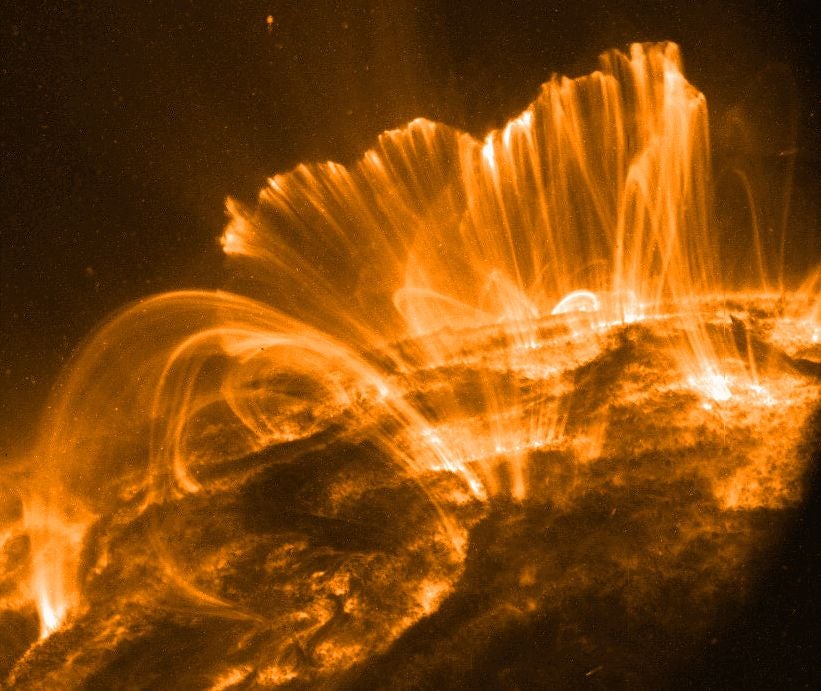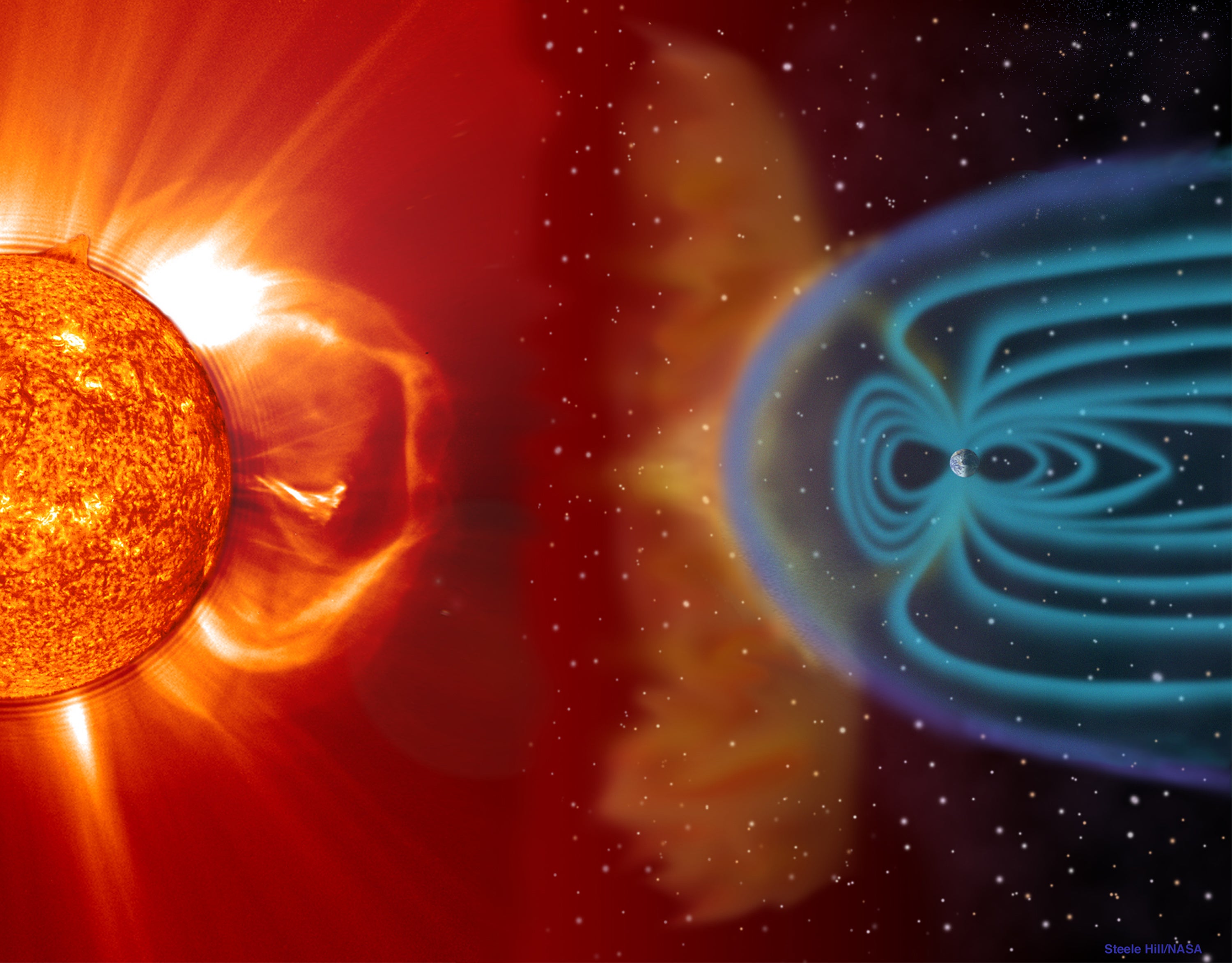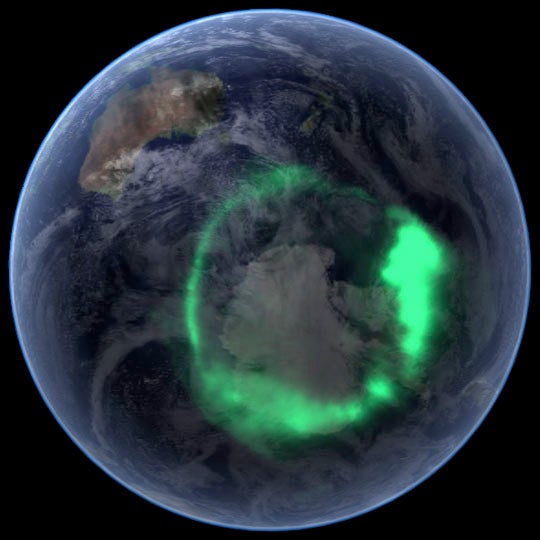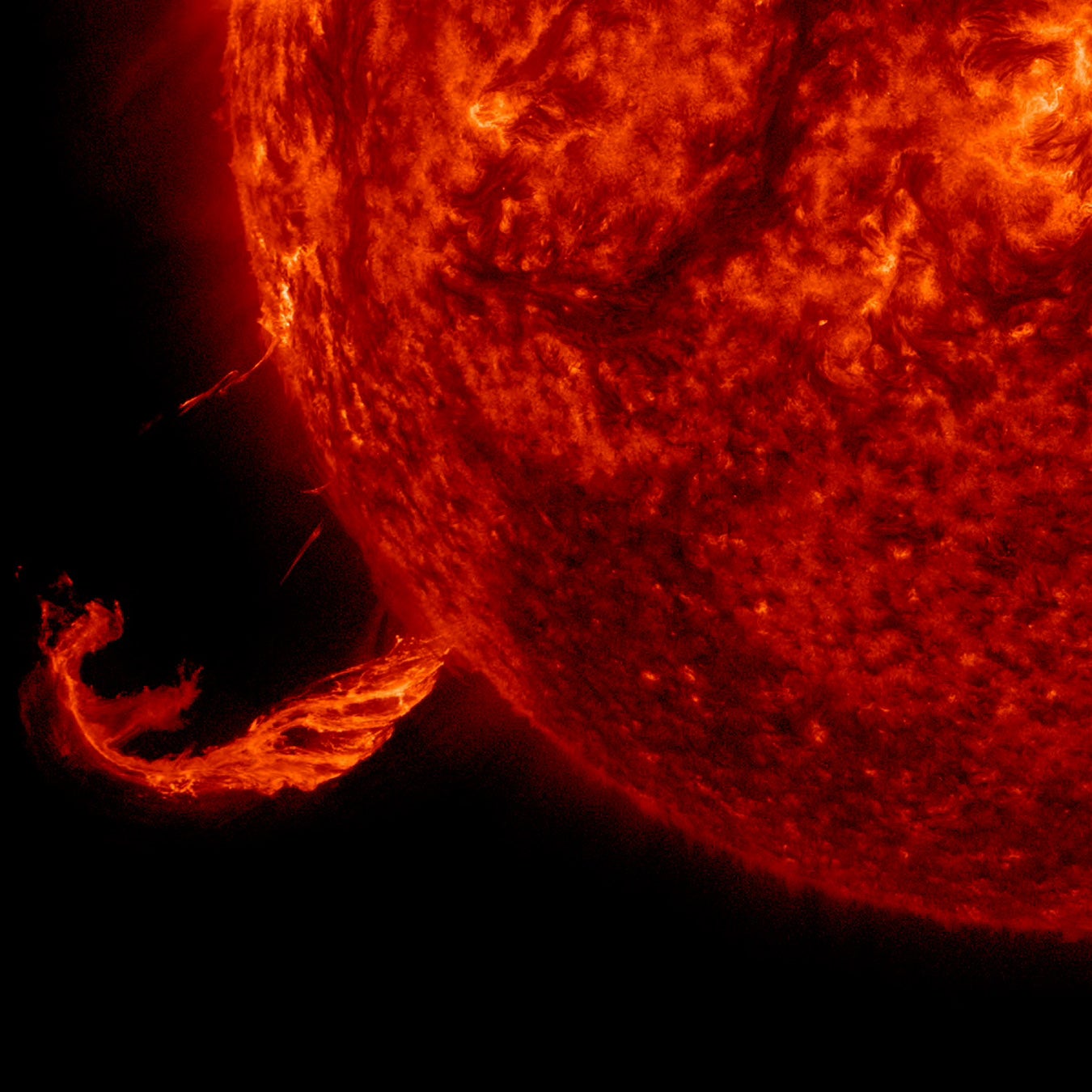How a severe solar storm could leave a lasting impact on our world
Sean T Smith explores the repercussions of such a storm on the infrastructure that underpins so much of our society


Exactly 10 years ago, our planet dodged an electromagnetic bullet that had been fired from the heart of the sun. Coronal mass ejections or CMEs are massive expulsions of magnetised plasma and solar particles that routinely erupt from the solar surface. Most drift off harmlessly into space but on 23 July 2012, the largest solar storm in a century catapulted through our orbit missing the Earth’s position by just nine days.
Had it hit home, the likely abandonment of the London Olympics would have been the least of our problems. The giant geomagnetic storm triggered by a direct hit could have fried electrical circuits, taken out communication systems and crippled national grids across the world; the global economy would only now be emerging from the aftershocks of such a worst-case scenario.
According to Mike Lockwood, a professor of space environment physics at Reading University, giant geomagnetic storms do not pose a direct threat to human life but the subsequent chaos could certainly become life-threatening.
“We take infrastructure for granted but when it’s not there all hell breaks loose,” he tells me. “Short-term crisis issues are likely to be horrendous. Disrupted power supplies could take weeks, months or in some places even years to repair. People will struggle to understand or accept the restrictions and civil unrest is a distinct possibility. Severe space weather is rated at a similar level of risk and impact [to pandemics] on the UK’s National Risk Register but it has the potential to be even more disruptive.’’
Prof Lockwood explains that most CME-driven solar storms aren’t a problem because they’re routinely fended off by the Earth’s magnetic field which deflects the geomagnetic energy outwards or towards the poles, where it dissipates into the beautiful aurorae such as the Northern Lights. Yes, one of nature’s most wondrous sights actually originates as CMEs on the surface of the sun 93 million miles away.
But occasionally gigantic CME-driven solar storms travelling through at speeds of 3,000km/s breach that defence unleashing giant geomagnetic storms on the Earth. As Prof Lockwood explains, radiocarbon dating of ice cores and tree rings indicates that it has happened in the relatively recent past that another major occurrence must be regarded as a when not if event.
Even now, we are facing the possibility of a direct hit from a “mild” storm this week, the effects of which could disrupt GPS and radio signals on Earth’s nightside, while aurorae might well be seen in some regions.

For most of human history, these hits wouldn’t have been much of a problem. Apart from a spectacular auroral light show our ancestors in a preindustrial – and pre-electrical – era would have been blissfully unaware that a geomagnetic surge had pulsed through the bedrock beneath their feet.
But by the time of the second industrial revolution, metals were no longer confined to ore seams; they had been mined for their conductive and ductile properties and stretched out as wires in the world’s first global communication network – the telegraph system.
The first eye-witness to the sun’s relationship with geomagnetic events on Earth was the British astronomer, Richard Carrington. In the middle of the morning of 1 September 1859, Carrington noticed, “two patches of intensely bright and white light”, erupting from dark spots on the solar surface.
But now that our technological world is so dependent on electricity and conductive materials it’s feared that the next big one could damage the national grid and disable communication systems
Although the solar anomaly was only visible for a few minutes, just 17 hours later that same CME would trigger a gigantic electromagnetic storm on Earth, transfiguring the night sky into day. On that particular evening, the atmosphere over the poles became so highly charged that auroral displays were visible as far south as Rome, Cuba, Miami and the Caribbean.
The telegraph system found itself under attack; some wires burst into flames around the world and those operators were showered with sparks and shocks. Named after the astronomer who had observed that CME, the Carrington Event is still the most intense geomagnetic storm ever recorded. Another Carrington-level event is regarded as a one-in-150-year occurrence.
But now that our technological world is so dependent on electricity and conductive materials it’s feared that the next big one could damage the national grid and disable communication systems – with dire social and economic consequences.
To understand why a modern-day Carrington-level event could prove to be so devastating and unstoppable, we need to retrace a CME’s journey from the sun.

The surface of the sun is now very closely monitored by Nasa through satellite monitoring, and reports are circulated via the UK Met office. CMEs of potential concern occur and are the focus of space weather reports that the Met office routinely shares with the energy and aviation industries.
However, colossal CMEs like the 2012 near miss or the Carrington Event travel at such velocity that they can reach Earth in just 17 hours.
But the real problem is that we can only tell how dangerous a CME-driven solar storm is going to be when it’s less than an hour away. Because it’s only at the point when it passes a deep-space satellite about a million miles away that we can gauge the orientation of the CME’s magnetic field.
Polarity matters. On a good day, the CME’s polarity matches that of the Earth’s magnetic field, and its energy will be deflected into space or dissipated harmlessly to the poles.
But when the CME’s magnetic field is orientated southwards, an emergency message is issued. From that point, there a re only about 30 minutes for the aviation industry to ground its aircraft and for the energy industry to suspend maintenance and power down national grids in preparation for a major geomagnetic event.

That’s because when it comes to the polarities of magnetic forces – opposites attract with cataclysmic consequences.
This is almost certainly what happens during those rare but high-impact Carrington-level events. The Earth’s magnetic field is drawn out into space for hundreds of thousands of miles before snapping back like an enormous elastic band explosively releasing vast amounts of geomagnetically-induced current (GICs) energy down through the surface of the Earth and into the wires powerlines and transformers of the national grid.
Introducing a DC current into national grids that run an AC network is unlikely to end well. In 1989, a geomagnetic storm in Quebec far smaller than the Carrington Event caused the electrical grid to fail, keeping 9 million in the dark for nine hours; even that short-lived disruption is believed to have cost the economy $13bn. The Quebec incident was many orders of magnitude smaller than the Carrington event.
The insurance market, Lloyds of London, in the wake of the 2012 near miss, commissioned a report warning the global insurance industry of the likely consequences of a solar superstorm on the North American electrical grid, which is believed to be particularly vulnerable to a geomagnetic surge.

“A major space weather event could lead to power loss for a period of weeks or more,” it says. “This would cause major disruption to transport, food supplies, emergency and hospital services amongst other things. The absence of such fundamental services could lead to major and widespread social unrest, riots and theft with ramifications for the insurance industry and society in general.”
It’s also been estimated that if just nine transformers were to blow out in the wrong places, the United States could experience coast-to-coast power outages that last for months. Prof Lockwood explains that the UK’s national grid is believed to be slightly more resilient.
But a risk assessment carried out by The Royal Society of Engineering described a reasonable worst-case scenario where six super grid transformers (SGTs) in England and Wales and a further seven grid transformers in Scotland could be damaged and taken out of service. Given that the time for an emergency transformer replacement – when a spare is available – is normally eight to 16 weeks, disruption to power supplies is likely to be very significant.
Using radiocarbon dating and historical records, Lloyds of London actuaries estimate 150 years as a reasonable range for a Carrington-level recurrence, so by that measure we’re 13 years overdue
Prof Lockwood explains that electricity supplies are more likely to be restored in major cities first: “Longer term disruption is more likely in coastal regions where transformers at the periphery of power grids are particularly vulnerable.” Coastal transformers are also more vulnerable because of the proximity of highly conductive seawater.
If large sections of the national grid are down for any length of time while transformers have to be replaced, we could be in serious trouble. If disruption is global, our over-reliance on “just in time” supply chains will be exposed far more brutally than during the recent pandemic as the inevitable interruption to the oil supply will most likely confine tankers to the world’s ports. Supermarket shelves could become depleted within days. The Lloyds of London report particularly highlights the likely failure of North American water treatment centres and the spectre of water shortages and sanitation problems that encourage the kind of diseases we thought were confined to the 19th century.
But for a major Carrington-level event to occur again a lot of variables have to disastrously align. The CME would need to not only find our planet at precisely the wrong place at the wrong time in its orbit but also it would need to be abnormally vast, fast and with the polarity configured in just the right way to breach our magnetic field’s defences. It doesn’t sound all that likely.
But Prof Lockwood is quick to disabuse me of my complacency: “Isotope spikes found in ice cores and corroborative evidence taken from tree rings strongly suggest major geomagnetic events throughout our history.”

Prof Lockwood is careful to point out that Isotope evidence is only “proxy data” but sudden globally synchronised increases in radiocarbon strongly suggest major space weather events and coincide with surviving accounts of auroral displays that tentatively date geomagnetic storms in 774, 1052, 1279, 1582, 1730 and 1770.
Using radiocarbon dating and historical records, Lloyds of London actuaries estimate that 150 years is a reasonable range for a Carrington-level recurrence, so by that measure we’re 13 years overdue for the “big one”.
The Carrington Event has become shorthand for the worst-case scenario but it’s important to remember that records only go back so far; there have almost certainly been larger geomagnetic storms in the past.
The 774 event is an obvious contender. Sometimes referred to as the Miyake event it produced the largest and most rapid rise in Carbon-14 ever recorded and must have been global because its impact has been recorded in tree rings as afar afield as Finland and New Zealand.
That seems to be the problem with rare but high-impact events like pandemics and severe space weather generally: perhaps that’s why they expose the limitations of civil emergency planning and the disconnect between central and local government.
Published in 2015, the UK government’s “Space Weather Preparedness Strategy” is a slim volume. Dominic Cummings has made a career out of telling people things they don’t particularly want to hear. When he gave evidence to the parliamentary committee trying to learn lessons from the pandemic, in June 2021, Cummings specifically criticised the inadequacy of the UK’s planning for space weather with an ominous warning: “The current government plan is completely hopeless. If that happens then we’re all going to be in a worse situation than Covid.”
Join our commenting forum
Join thought-provoking conversations, follow other Independent readers and see their replies
Comments



Bookmark popover
Removed from bookmarks